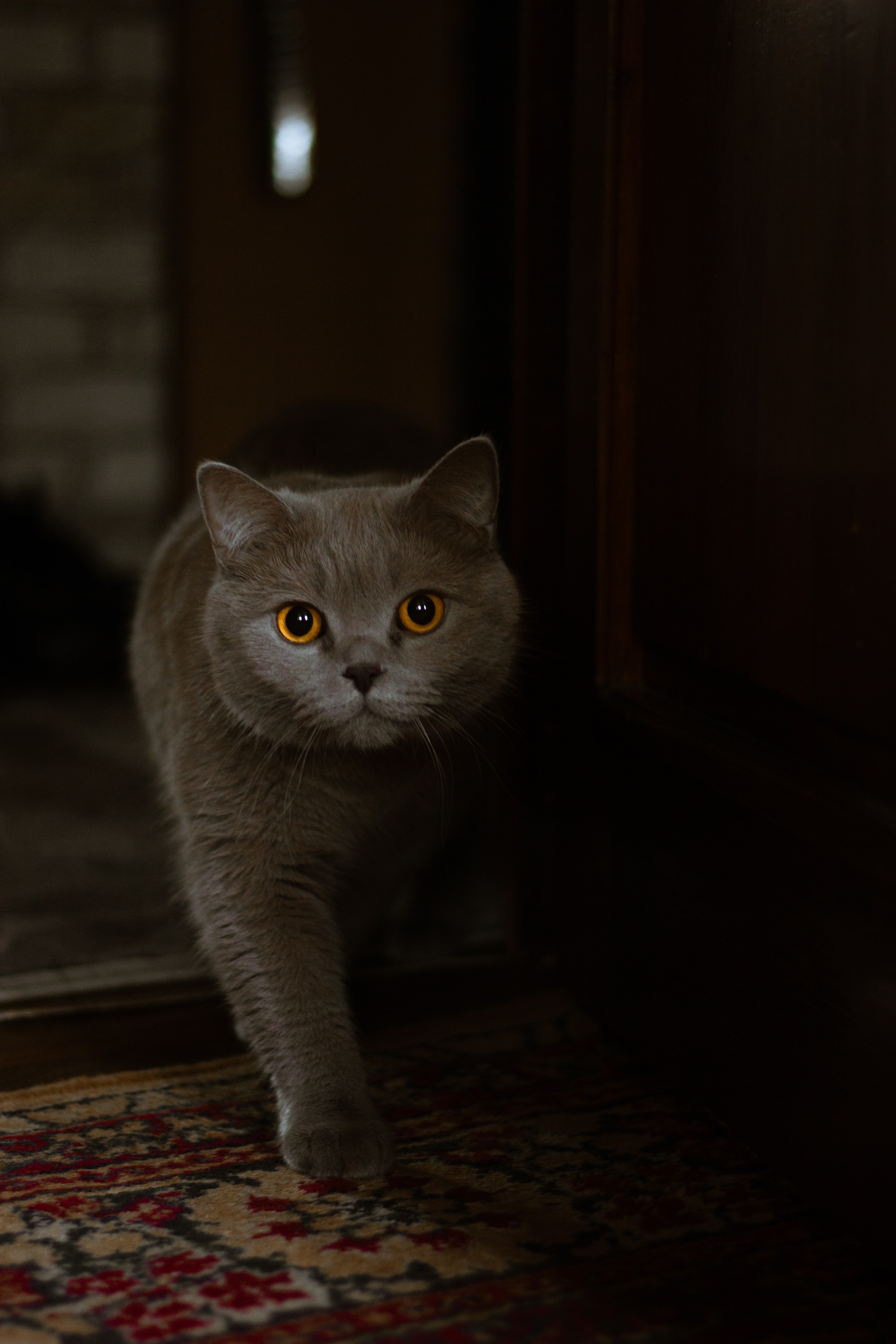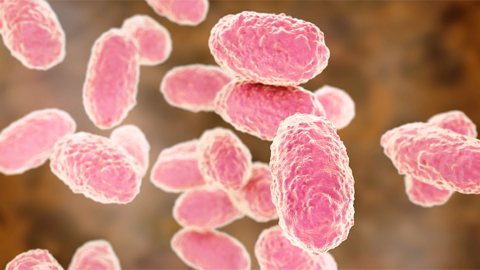Cats communicate with the help of bacteria living in their butts
It’s becoming ever clearer that we live in a microbial world. By now, we are well aware that microbes play important roles in digestion, training the immune system, and protection from pathogens. Although many studies have been done in model organisms like mice, some researchers are now asking similar questions about the microbiota of other animals in the hopes that this could help us take better care of our furry friends.

KittyBiome, a crowd-funded research platform, was started because, as vets and pet owners know, domestic cats suffer from a lot of digestive issues. And because we simply don’t know enough about cat digestion, it’s hard for vets to recommend diets or even medication that can help in the long term. Scientist Jonathan Eisen has said that the idea for KittyBiome came out of discussions at the University of California (UC) Davis Citizen Microbiology meeting, and was developed by microbial ecologist Holly Ganz. Now, their group is showing just how much the microbiome does for cats.
The group at UC Davis was keen to research the cat gut microbiome, and they decided to pursue an unconventional route to fund their research, using Kickstarter to seek help from the general public. Ganz is one of the authors of a report on how crowdfunding research can fill in funding gaps when resources from organisations like the National Institutes of Health (NIH) are hard to come by.
KittyBiome reached their funding goal, and involved their citizen scientist backers in the program by asking them to send cat poop samples for sequencing. The team set out with the goal of studying the guts of at least 1000 cats, to see how much variation there is between different cats; researchers want to compare cats living in houses, cats in shelters, and feral cats, as well as cats with different health conditions.

Ganz, the lead scientist on the KittyBiome project, has said that she is fascinated by the microbes found in cat guts and their anal glands and how these microbes might be linked to social behavior. Ganz hopes to use the research program to make real improvements to animal welfare: “A lot of cats and kittens with chronic diarrhea are euthanized, and if we could come up with something to help counteract this, we could be saving lives.”
Research under the KittyBiome umbrella has often been directed by the types of samples sent to the scientists by pet owners and animal healthcare professionals, leading to pretty diverse investigations into feline physiology. For some of the first KittyBiome-funded experiments, veterinarian Leah Isaacson expressed the anal sacs of a male Bengal cat as part of a regular health check-up. The cat’s secretions were sent to researchers at UC Davis.
The scientists used genetic analyses to identify the bacterial species present in anal sac secretions. They found that the microbial community in this organ is far less diverse than the feline digestive systems that have been investigated, where hundreds of species across dozens of genera have been found. In the Bengal cat study, 98% of the bacteria in the anal sac came from just six genera. Just three types of bacteria that were abundant in the genetic profile of the secretions could also be grown in lab cultures – Bacteroides fragilis, Tessaracoccus sp. UCD-MLA, and Finegoldia magna.

Researchers tested these bacteria for their ability to produce smelly molecules called volatile organic compounds (VOCs). They compared the VOCs produced by the bacteria with those found in the original cat swabs: out of 67 molecules produced by the lab-grown bacteria, 51 were also found in the cat secretions. This is a strong indication that at least some of the stinky molecules in cat spray are produced by bacteria.
This agrees with a previous study in hyenas showing that bacteria play a role in animal odors and generally supports a theory known as the Fermentation Hypothesis — that “symbiotic microorganisms living in association with animals contribute to odor profiles used in chemical communication and that variation in these chemical signals reflects variation in the microbial community.” This hypothesis is also supported by research showing that animals on antibiotics produce fewer smelly compounds in their secretions.
Fermentation is a microbial process that can happen when there is no oxygen present. It allows microbes to take energy from organic substances like sugar, and produces new small molecules that the microbes secrete as waste, like when yeast makes alcohol (ethanol) during beer production. Fermentation also happens in our guts all the time. Around 10 % of the energy we use every day comes directly from short organic acids that our gut bacteria make by fermenting food molecules we otherwise can’t digest.
The VOCs in cat spray are similar types of organic acid, called short chain fatty acids, many of which are known for their outrageous stench. If the Fermentation Hypothesis is correct, most such fatty acids in mammals would have a microbial origin. It may even be possible that the anal sac organ – which provides an oxygen-free environment for fermenting bacteria – has been retained in cats specifically to provide those bacteria a home.
These smelly substances are thought help cats identify each other as individuals and as group members. Therefore, by producing these smelly substances, bacteria living inside animals may be impacting group behavior and how animals recognize each other.

However, before any definitive conclusions can be established, these findings will need to be replicated in multiple cats, not just a single cat. Another important question is whether cats that live together in a house or shelter develop a more similar anal sac microbiota than cats who live apart or are feral. If so, would that mean that their scent markings become more similar over time? It would be fascinating to know the effect on group dynamics and recognition between animals, and how this particular bacterial community might be impacting the behavior of the host animals.
So what’s next for KittyBiome? Their long-term goals are to understand the effects of diet and behavior on cat health, to hopefully develop diet plans and perhaps pre- or probiotic products that pet owners can give to their feline companions. They are collaborating with Cat Tracker, a company that provides owners with GPS trackers for their cats, and connects those data with info about how cats live and behave, what they eat, and so on. The KittyBiome researchers want to try to correlate microbiome data with behavioral observations like distance traveled and the consumption of scavenged or hunted food. They are also analyzing samples sent in by owners who feed their cats a raw pet food sold in San Francisco, to investigate the impact of an uncooked diet
This story originally appeared on Massive Science, an editorial partner site that publishes science stories by scientists. Subscribe to their newsletter to get even more science sent straight to you.
Enjoy reading ASBMB Today?
Become a member to receive the print edition four times a year and the digital edition monthly.
Learn moreGet the latest from ASBMB Today
Enter your email address, and we’ll send you a weekly email with recent articles, interviews and more.
Latest in Science
Science highlights or most popular articles

Targeting toxins to treat whooping cough
Scientists find that liver protein inhibits of pertussis toxin, offering a potential new treatment for bacterial respiratory disease. Read more about this recent study from the Journal of Lipid Research.

Elusive zebrafish enzyme in lipid secretion
Scientists discover that triacylglycerol synthesis enzyme drives lipoproteins secretion rather than lipid droplet storage. Read more about this recent study from the Journal of Lipid Research.

Scientists identify pan-cancer biomarkers
Researchers analyze protein and RNA data across 13 cancer types to find similarities that could improve cancer staging, prognosis and treatment strategies. Read about this recent article published in Molecular & Cellular Proteomics.

New mass spectrometry tool accurately identifies bacteria
Scientists develop a software tool to categorize microbe species and antibiotic resistance markers to aid clinical and environmental research. Read about this recent article published in Molecular & Cellular Proteomics.

New tool matches microbial and metabolic metaproteomic data
Scientists develop a bioinformatics program that maps omics data to metabolic pathways. Read about this recent article published in Molecular & Cellular Proteomics

Meet Paul Shapiro
Learn how the JBC associate editor went from milking cows on a dairy farm to analyzing kinases in the lab.

